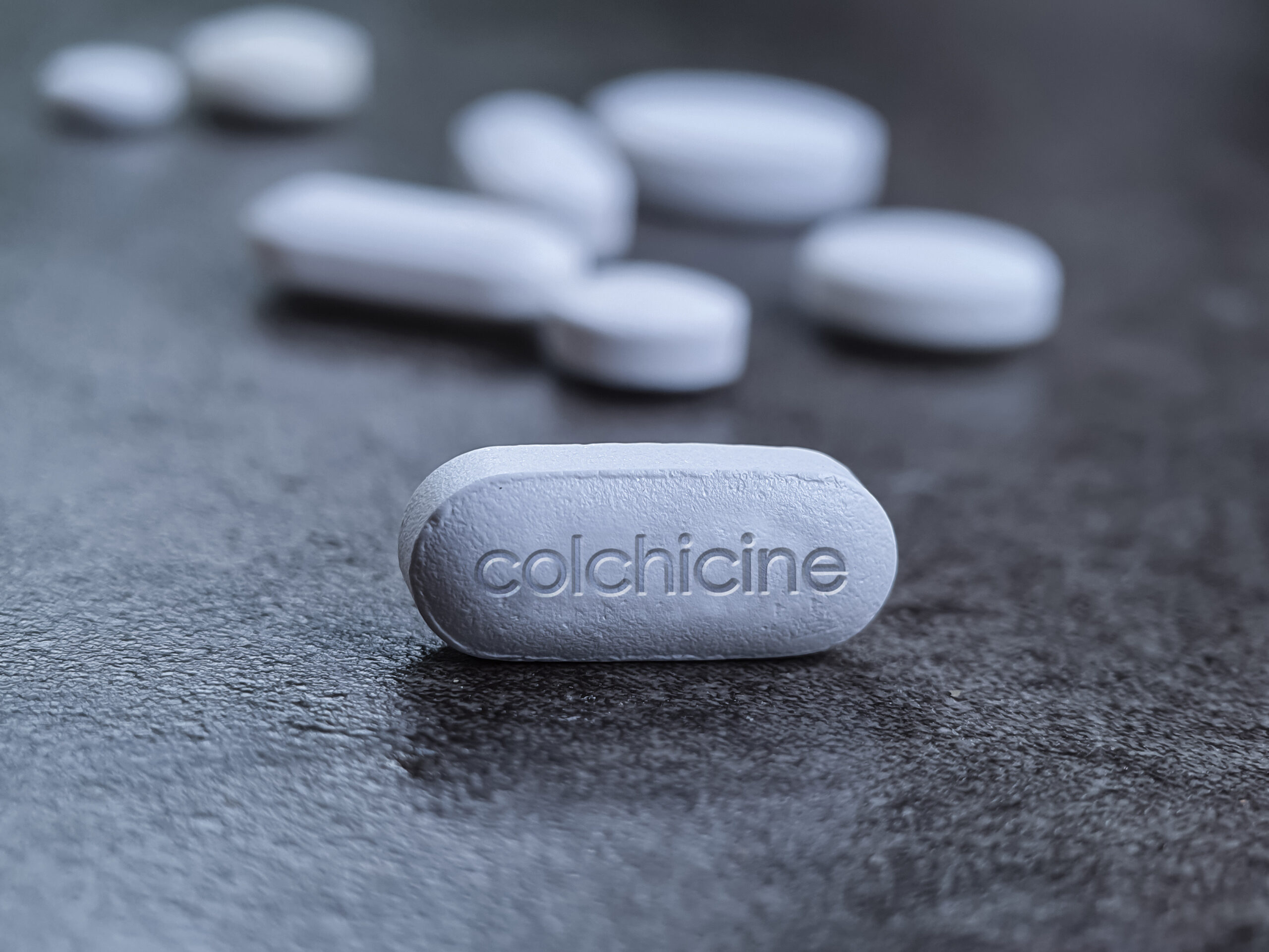Colchicine is a medication well known to many of us. It has been around for years and is often used in the treatment of inflammatory conditions such as pericarditis, skin conditions and gout. However, recent clinical trials have focused on the use of colchicine as a tool to reduce residual inflammation in patients with chronic coronary artery disease who are already being treated with standard medical therapies such as aspirin, statins, and ACE-inhibitors. This is exciting to us for multiple reasons but primarily in its illumination of the importance of inflammation in the progression of otherwise well-managed disease.
The mechanism of action of colchicine involves mitigating inflammation within the atherosclerotic plaques, stabilizing vulnerable lesions and thus reducing the risk of recurrent cardiovascular events. Colchicine is currently FDA-approved only for the treatment of known disease (secondary or tertiary prevention), not for primary prevention.
A summary of recent studies:
- COLCOT Trial (2019): The Colchicine Cardiovascular Outcomes Trial was the first to show a significant reduction in MACE (major cardiovascular events), including heart attacks and stroke, among patients with known coronary artery disease (CAD). In this trial, patients treated with low-dose colchicine (0.5mg/day) were compared to placebo.
- LoDoCo2 Trial (2020): A randomized, controlled double-blind study, comparing colchicine 0.5mg vs. placebo in more than 5,000 patients with documented coronary artery disease on appropriate medical therapy. There was a run-in phase, in which 15% of participants were found to be intolerant to colchicine. Participants were followed for a median of 28.6 months with the primary endpoint of CV death, heart attack, ischemic stroke or need for PCI. Ultimately, participants on Colchicine were found to have fewer MI (heart attacks) and fewer PCI, but no statistically significant benefit was found for ischemic stroke or cardiovascular death. In the group that received colchicine, risk for infection, pneumonia and gout was lower, but there was a small increase in non-cardiovascular deaths. There was overall a relative risk reduction of about 30% in the treatment group.
Earlier this year, in response to the new evidence being published regarding low dose Colchicine, the Journal of the American College of Cardiology (JACC) published a comprehensive review, “Colchicine in Cardiovascular Disease: A Comprehensive Review and Updated Recommendations.” The review emphasizes Colchicine’s potential as a tool in secondary prevention when used appropriately, taking individual risk factors such as potential drug interactions and kidney function into account.
So, now that we know Colchicine has sparked the interest of the medical community and is being considered as a new tool for the treatment of inflammation as a root cause of cardiovascular disease, the question remains: how should it be used?
- Should all patients be placed on colchicine as part of a secondary prevention regimen? No. At this time, Colchicine should be reserved as an adjunct treatment for those patients who are on optimal medical therapy and continue to see progression in disease (for instance, on CIMT) despite addressing all underlying root causes.
- Are there patients for whom Colchicine would not be appropriate? Yes. There is no benefit to those with baseline reduction in kidney function (GFR < 60). Colchicine is metabolized in the liver and excreted through the kidneys, so liver function must also be monitored.
- Are there significant side effects? Yes. Up to 15% of participants in the LoDoCo2 trial were found to be intolerant to the medication, mostly due to GI side effects.
- What dosage is appropriate? The trials studied colchicine at a low dose of 0.5mg daily, which is lower than the standard dose of 0.6mg daily. The concern with the 0.5mg dose is potentially cost; an individual conversation between provider and patient will determine the risk vs. benefit of utilizing the 0.6mg dose as a potentially lower-cost alternative.
Low-dose colchicine is an exciting “new” (old) kid on the block and has recently emerged as a promising adjunctive therapy for those with known coronary artery disease with continued progression of disease despite standard therapies. Colchicine use is supported by robust clinical trials, when used in the appropriate settings.
The BaleDoneen Method has always approached cardiovascular disease prevention from an inflammatory paradigm, so we are thrilled to see more research focusing on the lowering of inflammation as an avenue to decrease ongoing disease progression in high-risk populations. In our patients with optimally treated root causes on excellent medical therapy, Colchicine may be an extremely useful tool to continue to stop oxidative stress and halt arterial disease progression in appropriate patients.
